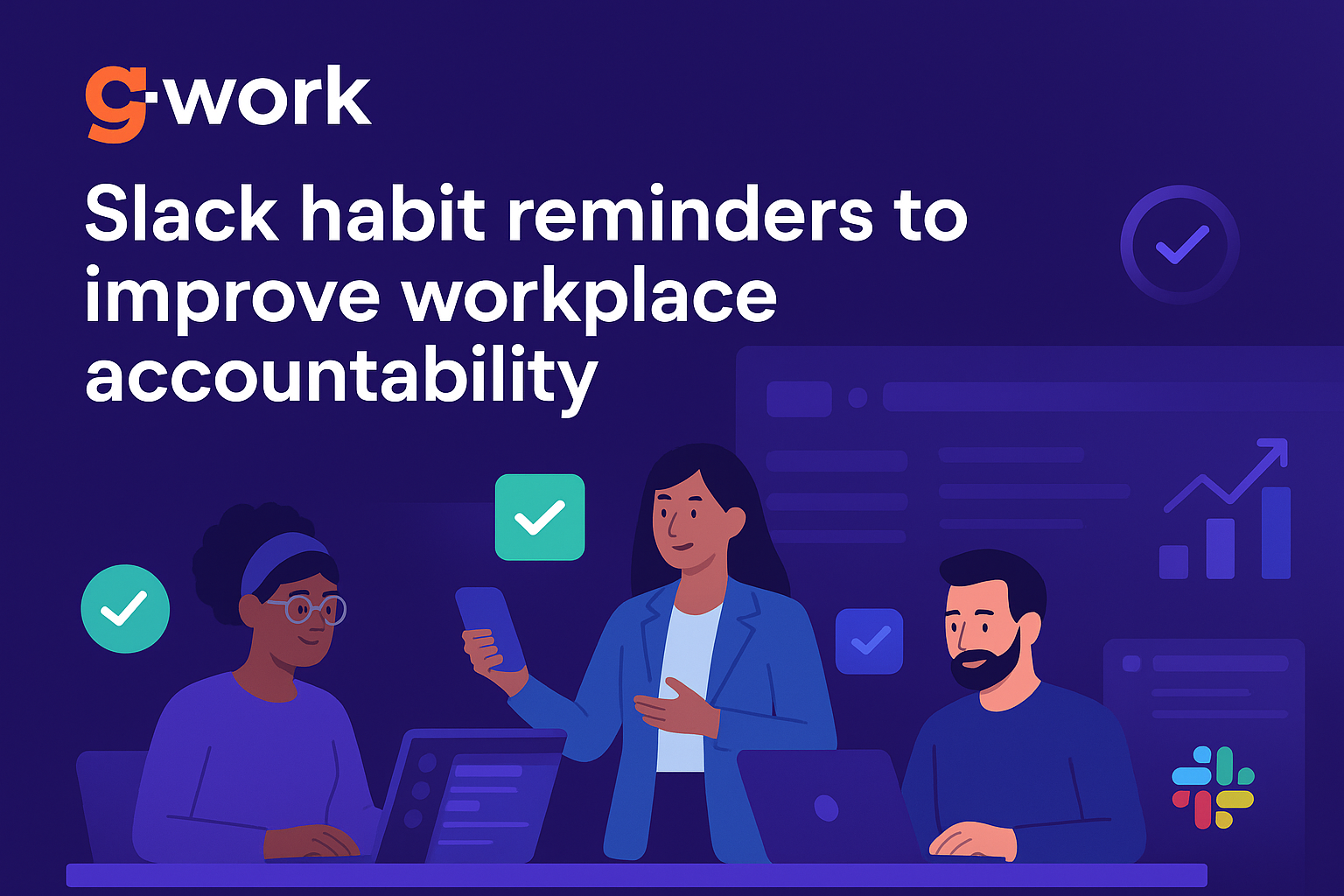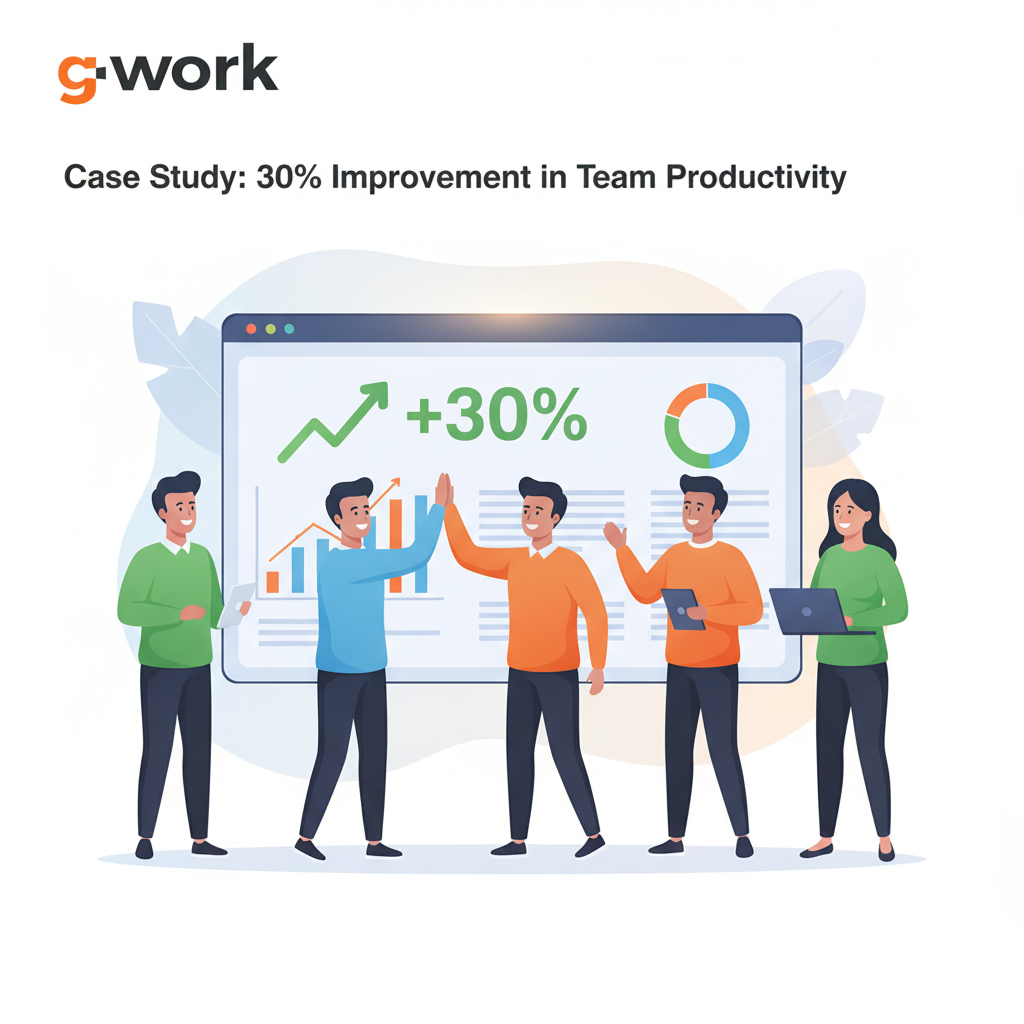Introduction: What is 360 Degree Feedback?
Depending on the type of feedback, teams are influenced to behave and perform in a certain way. When employees receive clear and well balance input, they will be able to modify minor daily habits that overtime would become habitual. The best method to achieve this is by 360 Degree Feedback – a well-organized process that helps employees to receive the feedback of various individuals.
So, what exactly is 360 Degree Feedback?
It is a system in which feedback is not only collected by an individual manager, but also by peers, direct reports and in certain instances even clients. The process also normally includes self-assessment. This is a wider outlook of performance and behavior as compared to a conventional top-down review. It brings out the strengths, identifies the blind spots, and uncovers the patterns that influence workforce habits.
The article below will discuss how 360-Degree Feedback can lead to the improvement of team habits. You will also understand how surveys operate, what your effective tool should be, the importance of behavior tracking and performance analytics, and the ways to solve typical problems. Lastly, we will examine how GWork enables teams to make feedback a habitual practice and actionable.
Why 360 Degree Feedback Matters for Team Habits
Habits are the foundation of performance at the workplace. The manner in which teams communicate, make decisions, and work together in their day-to-day tasks is what makes the difference between the smooth running and stalling of projects. Good habits help to progress faster and enhance morale whereas bad habits cause bottlenecks and frustration.
This is where 360 Degree Feedback comes in force. It gives a balanced perspective of the way in which people an employee interacts with most perceive the habits of the employee. One manager might fail to notice minor aspects such as the reaction of a person towards others, how he or she supports his or her subordinates, or even how he or she adds to the culture of the team. However, peers and reports tend to notice such trends.
With such a wider input, 360 Degree Feedback throws light upon the minor, repetitive behaviours that affect the effectiveness of the team as a whole.

Key benefits for building stronger team habits include:
- Self awareness: Employees are aware of the difference between their self perception and how they are perceived by others.
- Shared language: Teams come up with a common language of describing behaviors (e.g., timely updates, constructive feedback).
- Responsibility: Accountability When any kind of habits is measured and talked about publicly, there is a shared accountability.
- Continuous improvement: With constant feedback, it is not as difficult that teams can spot, modify, and reinforce habits over time.
Instead of one-off evaluations, 360 Degree Feedback creates a culture of routine feedback and habit-building, helping teams improve gradually and sustainably.
How 360 Degree Feedback Surveys Work
The useful tool, which gathers feedback of many points of view, is a 360 Degree Feedback survey. Its form and provision has a direct influence on the truthfulness, quality, and utility of the feedback.
Here’s a step-by-step process:
- Define objectives – Decide which habits or competencies you want to measure (e.g., leadership, collaboration, communication).
- Select participants – Include managers, peers, direct reports, and possibly clients. Always include self-assessment for comparison.
- Design questions – Ask about observable behaviors, not personality traits.
- Example: Instead of “Is a good communicator?” → Ask: “How often does this person provide clear project updates?”
- Ensure anonymity where needed – Protecting identities encourages honesty, especially from direct reports.
- Collect responses – Use an online 360 tool with automated reminders to improve response rates.
- Analyze results – Compare self-ratings with others’ ratings, highlight strengths, and uncover blind spots.
- Create action plans – Translate insights into clear, habit-based actions (e.g., “share weekly project updates”).
- Follow up – Run shorter pulse surveys or track behaviors over time to measure progress.
Momentum and follow-through is the actual strengths of 360 feedback. Rather than a single review, it is a consistent motivator of change in habits.
Designing Effective 360 Degree Feedback Surveys
Not every survey provides meaningful results. An inappropriate 360 survey may cause misunderstanding, partiality, or rather lack of enthusiasm. The trick here is to come up with surveys that are specific, relevant, and actionable.
Tips for Designing Better Surveys
1. Ask about actions, not character
- Bad: “Is this person a team player?”
- Good: “Does this person share project updates with the team on time?”
2. Use a consistent rating scale
- Keep scales simple (e.g., 1–5 or 1–7).
- Define what each number means to reduce interpretation bias.
3. Mix quantitative and qualitative questions
- Numbers show patterns.
- Comments provide context and real examples.
4. Keep it short and focused
- Limit surveys to 20–30 questions max.
- Shorter surveys = higher completion rates.
5. Add calibration items
- Include a few common questions across all teams to establish benchmarks.
6. Pilot test before full rollout
- Test the survey with a small group.
- Revise unclear questions before scaling.
7. Plan for follow-through
- Don’t just collect feedback.
- Design surveys with the next step in mind: coaching, action planning, or training.
Well-designed surveys minimize noise and focus on what truly matters — changing habits that improve team performance.
The Role of Technology: 360 Feedback Tools and Automation
Due to time and bias-related issues, manual collection, anonymization, and analysis of feedback may also be time-consuming. That is where automation and 360 feedback tools come in. The appropriate technology saves time, as well as, makes feedback more accurate, consistent, and actionable.
Characteristics of the Good 360 Feedback Tools.
-
Survey Builder
- Individualize questions, rating scales, and groups of participants.
- Make surveys reflect on your company values and behavioral goals.
-
Anonymity Controls
- Incidentally safeguard the identity of the respondent and still gain honest feedback.
- Promote open feedback on direct reports and colleagues.
-
Automated Distribution & Reminders
- Send surveys automatically, at the correct time.
- Enhance attendance through intelligent notification.
-
Real-Time Dashboards
-
- Get immediate knowledge using comparison reports and visual charts.
- Team spot strengths, team blind spots and trends.
Why Automation Matters
- Fewer administration tasks: The HR teams take less time in pursuit of replies.
- Increased response rates: The employees are automatically prompted.
- Increased check-ins: Brief, automated surveys eliminate the possibility of annuities only feedback.
- Constant enhancement: Data is a system of life, rather than a report.
Through automation, 360 feedback ceases to be a yearly performance review device, which is continuously used as a source of habit and behavior modification.
Choosing the Best 360 Feedback Tools
Not all feedback tools are created equal. Some provide only basic surveys, while others offer powerful analytics and habit-tracking features. The right choice depends on your team size, culture, and goals.
Criteria to Evaluate a 360 Feedback Tool
-
Ease of Use
- Simple, intuitive interfaces lead to higher adoption.
- If a tool feels clunky, employees are less likely to complete surveys.
-
Customization
- Ability to tailor questions, rating scales, and competencies.
- Ensures the feedback aligns with your organization’s unique values.
-
Analytics Depth
- Look for trend analysis, blind spot detection, and visual dashboards.
- Helps managers and teams see both big-picture insights and individual details.
-
Behavior Tracking
- Beyond ratings, great tools track actual habit changes over time.
- Links feedback to daily actions, not just annual scores.
-
Scalability
- Works just as well for a 10-person team as for a 5,000-employee enterprise.
- Grows with your organization’s needs.
-
Cost vs. ROI
- Compare subscription costs with the potential ROI of improved productivity, engagement, and retention.
-
Vendor Reliability
- Check customer support quality, case studies, and user reviews.
- Ensure the provider will partner with you long-term.
Pro Tip:
Don’t get distracted by shiny features. Focus on whether the tool helps you measure behaviors, track change, and improve team performance.
Interpreting Results: From Data to Action
Collecting 360-degree feedback is only the first step. The real value comes when organizations translate raw data into practical, habit-changing actions. Without this step, even the most comprehensive surveys end up as forgotten reports in a folder.
Steps to Turn Feedback into Action
-
Start with Strengths
- Highlight what employees and teams are already doing well.
- Reinforcing strengths builds confidence and motivates further growth.
-
Identify 2–3 Key Themes
- Avoid overwhelming employees with too many goals.
- Choose a few behaviors that will make the biggest impact, such as clear communication or timely project updates.
-
Spot Blind Spots
- Compare self-assessments with peer and manager feedback.
- Gaps reveal areas employees may not be aware of — often the most valuable insights.
-
Translate Feedback into Specific Actions
- Vague comment: “Needs to improve communication.”
- Actionable goal: “Send weekly project updates every Friday by 3 PM.”
-
Set Measurable Goals
- Example: “Reduce missed deadlines by 25% over the next quarter.”
- Concrete targets make accountability possible.
-
Assign Accountability
- Pair employees with a manager, mentor, or peer coach.
- Accountability partners ensure progress is tracked.
-
Schedule Check-Ins
- Regular reviews (monthly or quarterly) keep progress on track.
- Encourage reflection, adjustments, and recognition of improvements.
Why This Matters
Feedback without action is wasted potential. But when leaders and employees use structured action plans, they transform awareness into measurable behavior change.
Measuring Impact: Behavior Tracking and Performance Analytics
Collecting feedback and creating action plans are powerful steps — but without measurement, it’s impossible to know whether habits are really changing. This is where behavior tracking and performance analytics become essential.
How to Track Behavior Change
-
Frequency Logs
- Track how often specific actions occur.
- Example: number of weekly project updates submitted.
-
Pulse Surveys
- Short, focused surveys sent monthly or quarterly.
- Measure progress, team sentiment, and perception shifts.
-
Peer Observations
- Encourage peers to provide quick, structured feedback.
- Example: “Did this person contribute constructively in today’s meeting?”
-
Objective Metrics
- Link behaviors to business outcomes (KPIs).
- Link behaviors to business outcomes (KPIs).
Example: tracking on-time delivery rates, customer satisfaction scores, or sales conversion improvements.
Role of Performance Analytics
Analytics help leaders see whether new habits are sticking and whether they’re driving business results.
- Trend Analysis → Monitor whether behaviors improve over time.
- Correlation Studies → Identify which habits have the strongest link to performance.
- Heat Maps → Visualize strengths and risk areas across teams or departments.
- Cohort Tracking → Compare different groups (e.g., new hires vs. senior staff).
Why It Matters
When feedback is tied to real numbers, organizations can:
- Prove the ROI of feedback programs.
- Justify investments in training and coaching.
- Confidently promote and reward employees based on visible growth.
Simply put, what gets measured improves. By connecting 360 feedback with behavioral analytics, organizations ensure that feedback doesn’t just create awareness — it drives lasting transformation.
Common Challenges (and How to Fix Them)
360-degree feedback can be a powerful tool—but only if it’s used thoughtfully. Many teams stumble due to lack of clarity, poor follow-up, or survey fatigue. Let’s walk through the most common challenges and how to address them effectively.
1. Low Response Rates
Problem: Employees ignore surveys or delay completing them.
Solution:
- Keep surveys short (20–30 questions max).
- Use automated reminders.
- Build a culture that values feedback through leadership participation.
2. Biased or Vague Feedback
Problem: Responses are either too harsh, too nice, or not useful.
Solution:
- Ask about observable behaviors, not personality.
- Encourage constructive phrasing.
- Ensure anonymity to reduce fear of backlash.
3. Feedback Isn’t Interpreted or Used
Problem: Teams collect feedback but don’t know how to act on it.
Solution:
- Train managers on reading reports.
- Focus on trends, not isolated comments.
- Tie feedback directly to habit-based action plans.
4. Survey Fatigue
Problem: Employees get overwhelmed by too many surveys.
Solution:
- Run full 360 cycles biannually.
- Use short “pulse” surveys in between to check progress.
5. No Follow-Through
Problem: Insights don’t turn into habit change.
Solution:
- Assign accountability partners (managers, coaches, or peers).
- Set deadlines and track behavior-based goals.
- Use nudges and reminders to reinforce new habits.
6. Cultural Resistance
Problem: Teams resist feedback due to fear, distrust, or past negative experiences.
Solution:
- Clearly explain the goal is growth, not punishment.
- Share success stories and model vulnerability from leadership.
With the right planning, mindset, and tools, these common issues can be turned into learning moments—making your feedback program not just functional, but transformative.
Implementation Roadmap: How to Start a 360 Degree Feedback Program
Launching a 360 feedback program doesn’t have to be complicated. With the right structure, it can be manageable, repeatable, and impactful from day one. Below is a simple step-by-step roadmap to help you launch effectively and build long-term behavior change across your teams.
Step 1: Set Clear Objectives
- Define what you’re trying to improve.
- Choose specific behaviors or competencies to focus on (e.g., ownership, communication, decision-making).
Step 2: Secure Leadership Buy-In
- Get leaders involved early.
- Their participation sets the tone for a culture of openness and improvement.
Step 3: Choose the Right Tool
- Pick a tool that supports behavioral feedback, anonymity, automation, and analytics.
- Avoid tools that only focus on rating scores.
Step 4: Design the Survey
- Use behavior-based questions.
- Pilot test with a small team and refine based on feedback.
Step 5: Train Participants
- Brief reviewers on how to provide honest, constructive feedback.
- Help employees understand how to interpret their reports.
Step 6: Launch a Pilot
- Start with one team or department.
- Use the feedback to adjust survey design, cadence, and reporting.
Step 7: Roll Out Organization-Wide
- Communicate clearly.
- Make the process simple, respectful, and focused on development—not evaluation.
Step 8: Create Action Plans
- Help each employee turn insights into 1–3 habit goals.
- Support with accountability, coaching, or peer nudges.
Step 9: Track Progress
- Use analytics dashboards, pulse surveys, and behavior logs to monitor change.
- Highlight early wins to build momentum.
Step 10: Iterate & Improve
- Gather feedback on the process itself.
- Continue refining your 360 program as your team evolves.
Pro Tip: Run your first full cycle in a single quarter. You don’t need a perfect setup—just a plan that turns feedback into action.
How GWork Helps Implement and Scale 360 Degree Feedback
GWork isn’t just a survey tool — it’s a behavior change engine that turns feedback into daily progress. While many platforms stop at collecting insights, GWork goes further by helping your team build the right habits, track them, and scale what works.

Here’s how GWork supports your 360 feedback program at every step:
1. Configure Surveys with Habit Templates
GWork is packaged with pre-built templates on high-impact workplace habits (such as follow-through, communication, and collaboration). Questions can be completely customized to include your organizations values, leadership practices or the goals of a team.
2. Automate Distribution & Protect Anonymity
GWork helps to automate the process of invitation to surveys, their follow-ups and tracking of their completion – this guarantees high response rates. It also facilitates anonymity where necessary e.g, when feedback is collected among direct reports or colleagues to provide a secure environment where people can be honest.
3. Connect Feedback to Daily Behaviors
Contrary to individual survey instruments, GWork relates 360 feedback data to workday actions. Teams have the ability to observe tendencies over the time and see whether habits such as providing recognition or controlling blockers are being studied.
Example: “Improve communication” becomes a habit like “Share a weekly update every Friday at 3PM,” tracked inside Slack or Outlook.
4. Visualize Progress with Analytics
GWork dashboard provides the leaders with live insight into:
- Adoption of habit by teams and individuals.
- Weekly and quarterly behavior patterns.
- Departmental areas of strengths and risks.
It is not merely that you are measuring feedback you are measuring improvement.
5. Action Planning Made Easy
GWork turns insights into behavior-based action plans:
- Delegates habits by themes of feedback.
- Notifies members of the team to practice and monitor them.
- Reinforces new behaviors through nudges and habit streaks
This closes the feedback loop and builds lasting change — not just awareness.
6. Scalable for Teams of Any Size
GWork can be expanded to support a 10-person pilot or 1,000 employees, all across feedback. It is built into Slack, Teams, Outlook, and Google Calendar — meaning there is no learning curve or platform switching.
(Note: GWork is not a tool of HRIS or HRMS — it is all about behavior change in your current communication systems).
7. Onboarding, Training & Support
GWork includes support resources, habit playbooks, and training materials for managers and reviewers. You’ll never have to guess how to launch or coach effectively.
Bottom line: GWork helps you move from “collecting feedback” to actually “changing habits.” And that’s what drives performance.
CTA Suggestion:
[Try GWork for 360 Feedback → Get Your Free Habit Blueprint]
Best Practices for Sustained Habit Change
The use of 360-degree feedback can only be useful when such results are carried out on an ongoing basis so as to create a lasting behavior change. The secret? Make habit-building more like skill-building: take small steps, use frequently, and with guidance and encouragement.
The following are 7 best practices to ensure that you maintain the behavior change within your team:
1. Make Feedback Ongoing, Not One-Off
- Avoid “set it and forget it” reviews.
- Use short pulse surveys and quick nudges between full 360 cycles to keep habits top of mind.
2. Concentrate on Behaviors
- Do not attempt to perfect things at one time.
- Narrow down to 1-3 high impact habits each. The more specific, the better.
Rather than: “Get more collaborative.
Use: “Seek advice of at least one team mate before making decisions.
3. Lead by Example
- As the leaders engage in feedback and demonstrate a change in habits themselves, it makes the organization an example.
- Trust and adoption are developed through vulnerability at the top.
4. Celebrate Small Wins
- Also reinforce behavior change early and frequently.
- Appreciation (or even a mere shout-out) helps increase motivation and hastens adoption.
5. Use Data to Inform Coaching
- Don’t coach in the dark. Use behavior tracking and performance metrics to guide support.
- Example: In case one always has problems with deadlines, coach on time management or communication.
6. Coach and Hold Accountable
- Peer coaches or team leads can support habit progress.
- Schedule regular 1:1 check-ins to review goals and blockers.
7. Review and Refresh the Program
- Revisit survey questions every 6–12 months.
- Update behavioral focus areas based on team goals and organizational change.
Summary: Consistent, small habits not a single feedback are the ones that result in permanent performance changes. Once feedback enters the day-to-day rhythm, teams change to proactive instead of reactive.
Conclusion: Driving Real Change with 360 Degree Feedback
A 360-degree feedback is not just a performance review tool, but it is a springboard to create better habits in your team. As workers get consistent, practical feedback when viewed through a variety of lenses, they start noticing their areas of weakness, building up areas of strength, and transforming how they do their work.
However, feedback is not sufficient. The transformation comes like when the insights are linked to life behavior change, which is monitored, prodded, and applauded in the long run. And that is where GWork comes in.
Through structured feedback, habit reinforcement, and behavioral analytics, GWork transforms performance feedback into a scalable performance feedback system to create high-performing and high-trust groups.
Want to transform your team’s habits through better feedback?
Book a Demo or Get Your Free Habit Blueprint with GWork today.
Frequently Asked Questions (FAQs)
Q: How often should we run a 360-degree feedback survey?
Complete 360 cycles are normally conducted on a 6 to 12 months basis. Continue to do run shorter pulse surveys monthly or quarterly to remain in motion on tracking habit progress.
Q: Should 360 feedback be anonymous?
Yes – particularly with peer and direct report reviews. Honesty is stimulated by anonymity. Nevertheless, the open, direct feedback provided by the leadership coaching can help: this depends on your team culture.
Q: Can 360-degree feedback be used for promotions?
It also can inform the decisions of promotion but not be the only one. It is mainly developed. Combine it with performance measures, coaching discussions, and performance appraisals.
Q: How do we handle unfair or overly negative feedback?
Look at patterns, not individual remarks. Train how to give behavioral based positive feedback. And keep feedback and coaching together always– not judgment.
Q: What should we track to measure habit change?
Monitor behavior frequency (i.e. weekly reported), pulse survey ratings, and KPI such as meeting deadlines, customer satisfaction, or employee attendance.
Q: What’s the best tool for running 360 feedback?
Select an easy to use feedback tool that facilitates behavioral follow-through and fits into your current workflow. GWork wants to assist you in doing just that – feedback to habit change, it is all under one roof.











